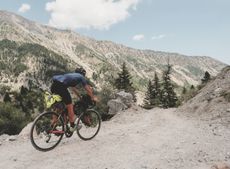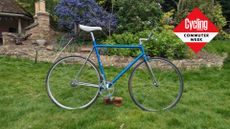Seven toughest climbs of the 2017 Vuelta a España
From 30km in length to 30 per cent gradients

Ermita St Lucia - stage five
The first summit finish of the 2017 Vuelta a España will come on stage five with a short, sharp climb out of the seaside town of Alcossebre to Ermita St Lucia.
Only 3.5km, the climb averages more than 10 percent, with three sections ramping up to more than 20 per cent, meaning a hard explosive effort in the middle of the first week
Xorret del Cati - stage eight
Not quite a summit finish (there's a short, two kilometre descent from the top to the finish) the Xorret de Cati climbs nearly 400m in around four kilometres with a double digit average gradient.
>>> Vuelta a España route 2017: key climbs and what to expect
Hidden in there are a few sections at more than 20 per cent, which will warm the riders up nicely for more of the same the following day...
Get The Leadout Newsletter
The latest race content, interviews, features, reviews and expert buying guides, direct to your inbox!
Cumbre del Sol - stage nine
Another day, another stage ending in a steep three kilometre climb that could really shake up the general classification at the end of the third week.
Cumbre del Sol has become a Vuelta regular, with Tom Dumoulin beating Chris Froome to the summit here in 2015, with its wide road and steady but steep gradient taking no prisoners from riders who attack too early.
Sierra de la Pandera - stage 14
The lesser of the two Sierras at the end of the second week, the Sierra de la Pandera is likely to be overshadowed by the Sierra Nevada (see below) but shouldn't be underestimated.
>>> Who will be riding the 2017 Vuelta a España?
The 7.6km climb averages nine per cent, but hides a two kilometre section midway up that stays steadfastly and 12-14 per cent and will surely be the launching pad for attacks.
Sierra Nevada - stage 15
The second shortest road stage of the 2017 Vuelta a España also includes it longest climb and its highest summit finish, with the stage finishing at 2,490m at Sierra Nevada after a 30km climb from the outskirts of Grenada.
Romain Bardet currently holds the KOM on the Strava segment with a time of more than an hour and a half while on an altitude camp in 2014, but might have to beat that if he's to take the stage win.
Los Machucos - stage 17
Most of my information about this climb, which is the summit finish on stage 17, came from a website called dangerousroads.com, which tells you everything you need to know about the severity of the ascent.
A highly irregular climb, some sections in the middle hit gradients as high as 31 per cent, with a concrete road surface with strips across it to stop cars slipping down in wet or icy condition, and to make it even harder for the riders.
Alto de l'Angliru - stage 20
<iframe height='405' width='590' frameborder='0' allowtransparency='true' scrolling='no' src='https://www.strava.com/segments/738025/embed'></iframe>
The Angliru has only been used six times in professional racing, but has already earned a fearsome reputation in the peloton with its 13.2km length and average gradient of nine per cent.
>>>
Hidden in that average gradient is the fearsome Cueña les Cabres stretch of the climb, which rears up to more than 20 per cent for long sections before a flat and slightly downhill run to the line.

Thank you for reading 20 articles this month* Join now for unlimited access
Enjoy your first month for just £1 / $1 / €1
*Read 5 free articles per month without a subscription

Join now for unlimited access
Try first month for just £1 / $1 / €1
Henry Robertshaw began his time at Cycling Weekly working with the tech team, writing reviews, buying guides and appearing in videos advising on how to dress for the seasons. He later moved over to the news team, where his work focused on the professional peloton as well as legislation and provision for cycling. He's since moved his career in a new direction, with a role at the Department for Environment, Food and Rural Affairs.
-
 Nightmares, niceties and gnarl: 10 years of the Transcontinental Race
Nightmares, niceties and gnarl: 10 years of the Transcontinental RaceThe ultra-distance benchmark that pits riders against a 4,000km self-supported Europe-wide trek reaches double figures
By James Shrubsall Published
-
 Why the best commute will always be aboard my old steel fixie
Why the best commute will always be aboard my old steel fixieCharming, simple, and always a great workout, this is the perfect town bike
By Joe Baker Published